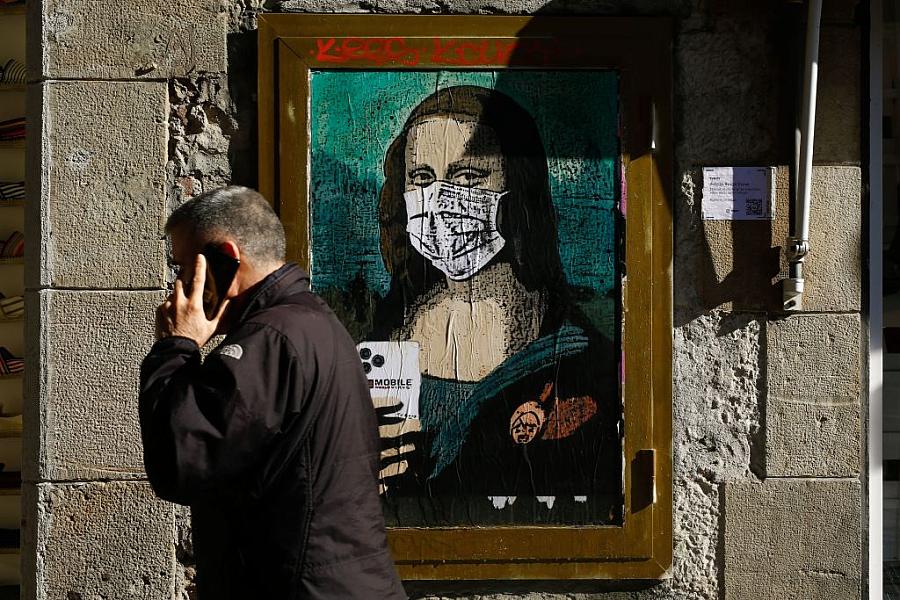Don’t let science trolls drag you under the COVID-19 bridge

(Photo by Pau Barrena/AFP via Getty Images)
When the sheriff of a small county in Florida ordered his deputies to stop wearing masks to protect themselves and others from COVID-19, he was treated like a scientific expert by local media.
Reporters Tamara Lush and Mike Schneider at NBC News in Miami quoted Marion County Sheriff Billy Woods saying something that is flat out false and presenting it as if it was a true assessment of the state of the evidence on masks.
“We can debate and argue all day of why and why not. The fact is, the amount of professionals that give the reason why we should, I can find the exact same amount of professionals that say why we shouldn’t.”
Oh really? The reporters should have pushed further. Where is this body of evidence you have amassed? Who are these experts and why do you trust them more than you trust the well-established and well- respected scientific and public health organizations that have been calling for mask use during the pandemic?
NBC Miami gave a nod to the CDC guidelines in the story, but it amounted to a classic journalistic copout. Quote the sheriff. Then quote the CDC. He said, she said. The audience is left to sort it out and pick sides.
A version of the sheriff’s quote appeared in news stories about the sheriff’s alarming decision all over the country.
The sheriff is doing something that too many talking heads have been allowed to do: spreading disinformation. What he is saying is a version of the propaganda being spread by political interests and internet trolls working to undermine the most basic concepts that should guide emergency responses to virulent diseases.
Disinformation is always bad for democracy. But it is especially toxic during a disease epidemic. When there is a disease outbreak, the only way to get the disease under control is through a united effort that involves government agencies, health care systems, law enforcement, schools, and (hopefully) citizens concerned about their own safety and the safety and economic recovery of their communities.
When it’s a novel disease such as COVID-19, there is confusion at the outset about how to get it under control, but by gathering evidence from frontline medical workers about what works and running statistical models to find patterns amidst the data noise, we can start to arrive at some provisional guidelines. Social distancing was the first tool that emerged with this pandemic, a blunt instrument borrowed from other recent outbreaks. It was quickly followed by a growing chorus of voices recommending mask use as well.
It should have been obvious to anyone who has even been to the dentist’s office, let alone watched any of the hundreds of shows featuring health care professionals wearing masks as they fight to save patients’ lives. Covering your mouth and nose cuts down on droplets spreading from you to other people, and makes it less likely you’ll breathe in droplets from them. CDC leadership explained it well in an editorial last month in JAMA:
Covering mouths and noses with filtering materials serves 2 purposes: personal protection against inhalation of harmful pathogens and particulates, and source control to prevent exposing others to infectious microbes that may be expelled during respiration. When asked to wear face coverings, many people think in terms of personal protection. But face coverings are also widely and routinely used as source control. For instance, if given the choice between having surgery performed by a team not wearing some covering over their mouths and noses vs a team that does, almost all patients would reject the former. This option seems absurd because it is known that use of face coverings under these circumstances reduces the risk of surgical site infection caused by microbes generated during the surgical team’s conversations or breathing. Face coverings do the same in blocking transmission of SARS-CoV-2.
But Sheriff Woods is participating in an unfortunate game being played by people wanting to create a false narrative about the pandemic. They want to stoke fears of government overreach and – even worse – xenophobia. They are doing this at the expense of thousands of lives. COVID-19 is now on pace to become the second leading cause of death in the United States by the end of 2020, just behind ischemic heart disease.
Don’t play that game. When it comes to masks, trust the same sources you have always trusted: respected health care organizations like the Mayo Clinic, respected academic centers like the University of California, San Francisco, and respected scientific publications like The Lancet.
Of course there will be an ongoing debate about masks specifically for use against COVID-19. That debate will play out for years because scientists debate everything. Remember: there were debates about tobacco’s connection to cancer for decades before the U.S. surgeon general finally pulled the country and eventually the world in the right direction.
In a public health crisis, the public needs to move in a unified direction in order to prevent the worst- case scenario. We have to go with the best available evidence. Don’t be fooled by internet trolls and political interests trying to tell you otherwise.

